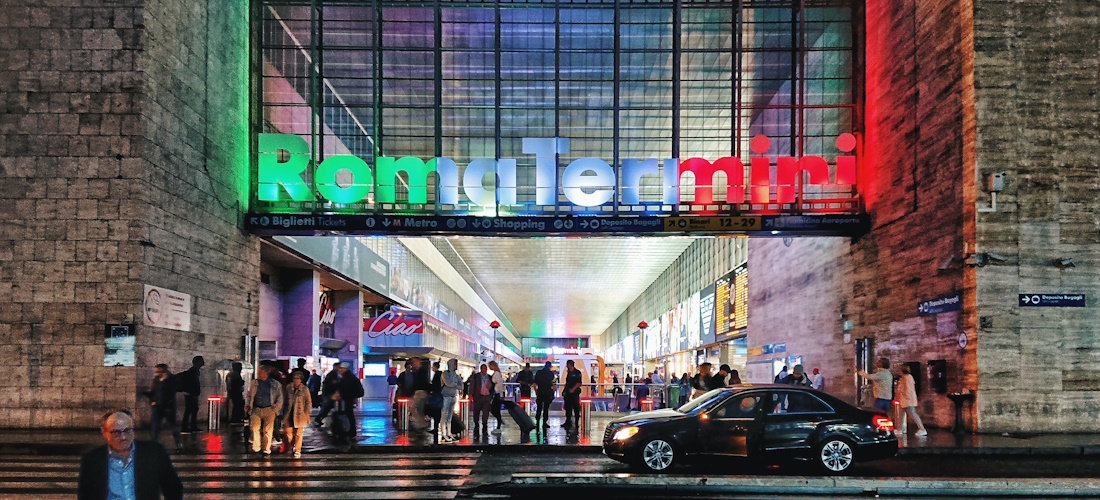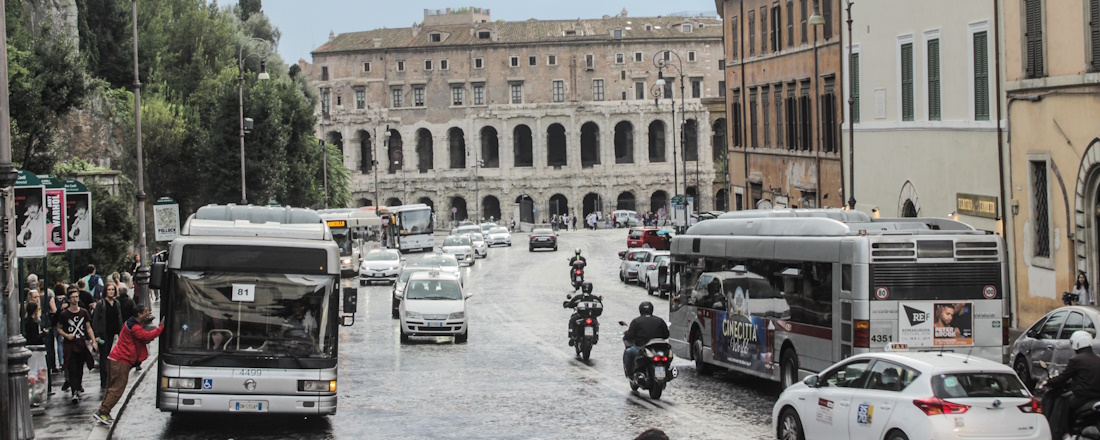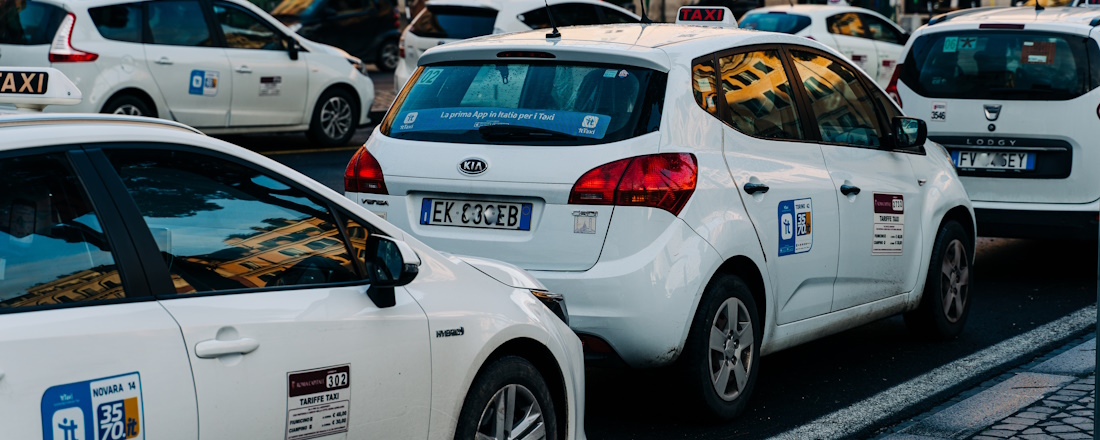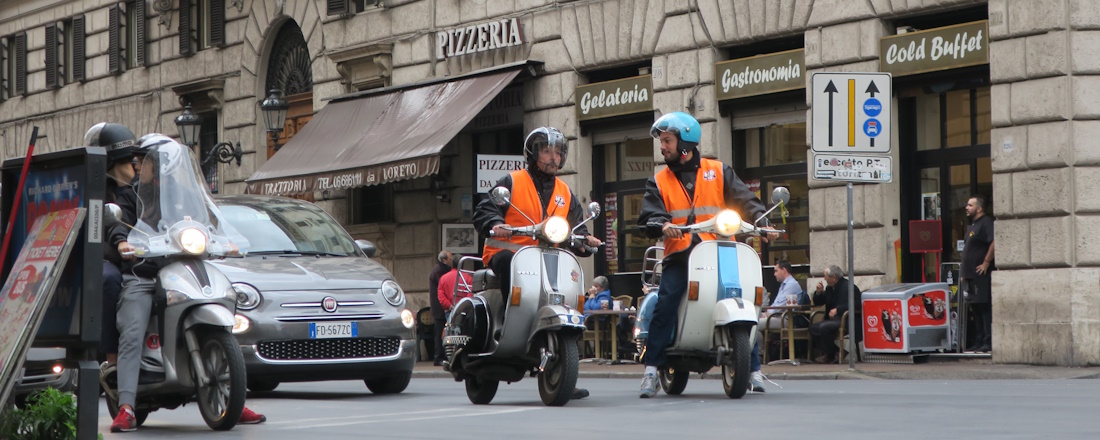Expats should find it easy to get around Rome, thanks to its comprehensive and efficient public transport networks. The metro system is extensive and runs frequently, with suburban train routes that stretch into its outskirts. Some buses run to areas not connected by train.
The city runs on an integrated transport system, and tickets are valid on city buses, trams and the metro, as well as some trains.
Public transport in Rome
Rome offers various transport tickets and travel cards, catering to different travel needs and durations. Single-journey tickets (BIT) last 75 minutes and allow unlimited transfers, except when re-entering the metro.
Day passes (MetroBus 24, 48 and 72 hours) provide unlimited travel for their respective durations, while a weekly pass is ideal for longer stays. The Roma Pass, specifically for tourists, includes free public transport and benefits like line-skipping and discounts for some attractions. Tickets can be bought at metro stations, newsagents and ATAC booths.
Metro
The Roman metro may not always be punctual, but it is well organised. Trains depart regularly, and many stops are appropriately named after the monument that they’re closest to.
It’s worthwhile noting that the metro goes around rather than through the historic centre. At the end of each line, there are connecting suburban trains. For those new to the city, it’s helpful to know that the metro operates until midnight, with extended hours on Friday and Saturday nights.
Metro tickets can be purchased at every station, and the contactless system allows easy entry and exit. The BIT ticket, valid for 75 minutes, is often sufficient for single metro journeys, while the MetroBus tickets offer unlimited rides for 24, 48 or 72 hours.
See ATAC for more about Rome’s Metro, tram and bus system and its operating hours.
 Trains
Trains
The suburban train line, run by Trenitalia, connects the outskirts of Rome with the metro and the rest of Italy. Expats should be aware of beggars and pickpockets on the trains and at stations. Timetables and maps can be viewed on the Trenitalia website. These regional trains are a boon for those wishing to explore beyond the city limits, offering access to nearby towns and scenic areas.
Train tickets for suburban lines are compatible with the BIT ticket and the MetroBus passes, allowing seamless integration with other forms of public transport in the city.
See Trenitalia for suburban and regional trains.
Trams
Rome’s tram system is of limited use. Although trams can squeeze into some of the city’s smaller roads, the routes followed are limited and don’t link up with the metro. However, they provide a scenic way to see parts of the city not easily accessible by the metro, and they’re particularly useful for reaching destinations in the Trastevere neighbourhood and along the Tiber River.
Tram travel is included in the BIT and MetroBus tickets, making it an affordable option for short trips or as part of a longer journey combining multiple modes of transport.
 Buses
Buses
Buses are the least common form of public transport in Rome. The metro has made them redundant in places, and between the traffic and the tiny streets, buses can be a terribly slow way to get around. That said, routes are extensive, and lists of routes and timetables are available online. They remain an essential part of the transport network, reaching areas not serviced by the metro, and are particularly useful during the metro’s off hours.
Like trams and the metro, buses accept the BIT and MetroBus tickets, making them a flexible option for navigating areas not covered by rail.
Taxis in Rome
With an extensive public transport network, taxis are usually the last resort in Rome. They’re expensive, and drivers have a bad reputation for overcharging. If expats do catch one, they should always look for the official white or yellow cabs and insist that the meter be used or at least negotiate a flat fare before getting into the car.
When using taxis, it’s essential to understand the fare structure. The cost of a ride in Rome is calculated by a taximeter, with base fares depending on the time of day. Additional costs may apply for extra luggage or passengers. In some cases, official cab fares offer a 10 percent discount, such as rides to public hospitals or for women travelling alone at night. For airport transfers, fixed fares are in place to key destinations within Rome.
Alternatively, ride-hailing services such as Uber Black operate in Rome. Many expats prefer using ride-share apps, as they minimise language barrier issues and allow expats to view routes and fares, which prevents drivers from overcharging. The downside of ride-sharing in Italy is that due to strong legislation protecting licenced taxi drivers, the Uber alternative is essentially hiring a temporary private driver, which is quite costly.

Useful links
Driving in Rome
Italian cities are generally not car-friendly, and Rome is no exception. It was built long before cars came into existence, and attempts to accommodate them have created a confusing mess of one-way streets, impossibly tight alleys and deathly roundabouts. Parking is also limited and expensive. The city’s streets are known for aggressive drivers and congestion, especially during rush hours between 7–9am and 5–7pm, adding to the driving challenges.
The price of fuel in Rome is relatively high, but smaller European and Italian cars offer better fuel efficiency. Electric vehicles are becoming increasingly popular due to their lower operating expenses and environmental benefits.
Moreover, a ZTL (Zona Traffico Limitato) is in place in Rome to reduce congestion, limiting access to certain areas. Hefty fines are charged if individuals drive through these zones without a permit. This system encourages using public transportation, which is extensive, user-friendly and cost-effective.
Expats in the city are advised to walk or catch public transport. If they are keen to explore wider Italy or one of its neighbouring countries, renting a car is an option, and plenty of vehicle rental offices offer good cars at affordable prices. Renting an electric car could be a great option, as Rome increasingly supports electric vehicle use, with an expanding network of charging stations throughout the city.

Useful links
- Learn about the ZTL areas and restrictions in Rome at Roma Mobilità
Cycling, scooters and Vespas in Rome
Bicycles
In the past, bicycle paths in Rome were few and far between. More often than not, cyclists would have to ride on the road, which can be dangerous. Recent initiatives in Rome have led to more cycle paths being constructed. This has multiple benefits, including health, ease and safety of getting around and reducing traffic congestion and air pollution.
For those looking to explore Rome at a slower pace, renting a bicycle offers an excellent opportunity. Numerous rental agencies provide traditional and electric bikes, allowing visitors to easily navigate the city’s streets and historic areas. The availability of bike-sharing services, such as Uber’s option, further enhances cycling accessibility in Rome.
For electric bike sharing, visit Lime or Dott.
Electric scooters
Electric scooters are a popular option among residents and visitors alike, especially given Rome’s scooter-sharing system. By simply downloading an app, e-scooters can be found, accessed and ridden at a low rate. These services, such as Helbiz, Lime and Bird, offer a convenient and eco-friendly means of exploring the city.
For electric scooter sharing, see Helbiz, Lime, Bird and Dott.
 Vespas and motorcycles
Vespas and motorcycles
Another alternative is using Vespas, and there are many rental agencies for them dotted around the city. Despite the prevalence of Vespas and motorcycles, driving by scooter can be dangerous, considering Rome’s chaotic driving conditions. Nonetheless, for the experienced rider, navigating Rome on a Vespa can be an exhilarating way to experience the city’s vibrant atmosphere.
For scooter- and Vespa-sharing services, visit Ecooltra, Zig Zag / Go Sharing and Acciona.
Useful links
- For a variety of bicycle, electric bike, Vespa and scooter rentals, as well as guided tours, visit Bici & Baci, Scooter Colosseum and OnMovo
Walking in Rome
Whether walking around Rome is a feasible mode of transport depends on one’s fitness level and the area where one lives. Most people go on foot in the central district, but sights like the Vatican and the Colosseum are further out.
Unless expats live in the centre of Rome, they’ll need to rely on public transport at least part of the way. Once there, the footpaths are wide and clean, and there are always people about, day or night.
The city’s layout, with its narrow streets and hidden piazzas, is best explored on foot, offering an intimate glimpse into Rome’s daily life and historic charm. Even areas like Trastevere and Monti, while slightly off the beaten path, are comfortably accessible on foot, revealing local artisan shops, quaint cafés and traditional trattorias.
The only thing expats need to be careful about is crossing the road. They should never jaywalk or use the designated crossing without stopping and looking, as Italian driving culture often asserts that drivers, not pedestrians, have the right of way.
Pedestrian safety is paramount in Rome, and while crosswalks are common, their respect by drivers can be variable. Expats should remain vigilant, especially on busy thoroughfares, and make eye contact with drivers before crossing. Following the locals can also be a practical way to gauge the right moment to cross.
Useful links
- For a comprehensive guide on safe walking routes in Rome, visit the official website, Turismo Roma.
Further reading
►For an overview of the different districts of the city, read Areas and Suburbs in Rome.
Image credits: Roma Termini by Dan V, Buses in Rome by Levi Ari Pronk, Taxi Rank by Gabriella Clare Marino, Traffic in Rome by Benjamin Fay, Scooter Riders by Pedro de Sousa, all on Unsplash.
Are you an expat living in Rome?
Expat Arrivals is looking for locals to contribute to this guide, and answer forum questions from others planning their move to Rome. Please contact us if you'd like to contribute.
Expat Health Insurance
Cigna Global Health Insurance.
Medical insurance specifically designed for expats. With Cigna, you won't have to rely on foreign public health care systems, which may not meet your needs. Cigna allows you to speak to a doctor on demand, for consultations or instant advice, wherever you are in the world. They also offer full cancer care across all levels of cover, and settle the cost of treatments directly with the provider.
Moving Internationally?
International Movers. Get Quotes. Compare Prices.
Sirelo has a network of more than 500 international removal companies that can move your furniture and possessions to your new home. By filling in a form, you’ll get up to 5 quotes from recommended movers. This service is free of charge and will help you select an international moving company that suits your needs and budget.
Get your free no-obligation quotes from select removal companies now!


